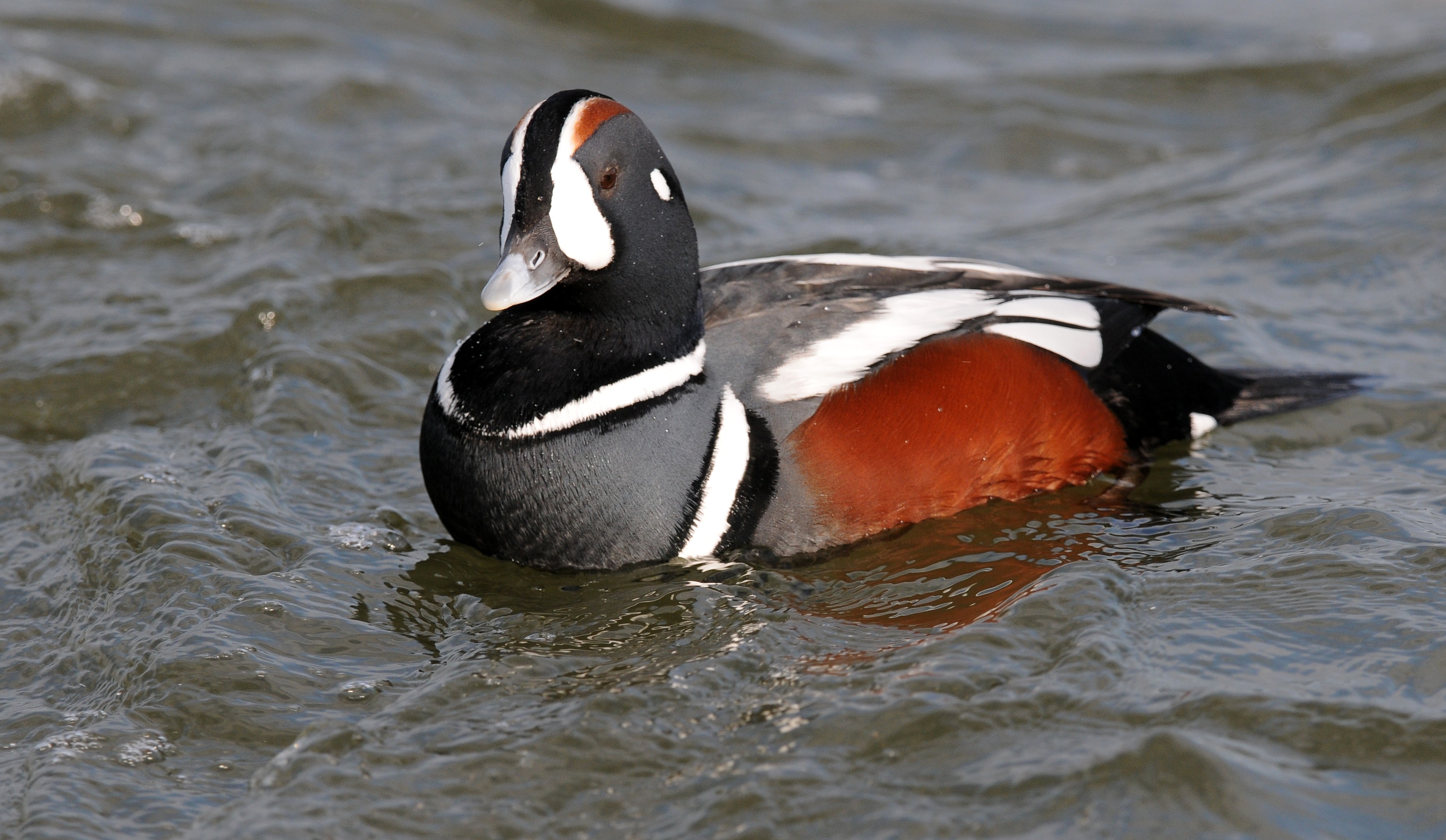
Harlequin duck(Histrionicus histrionicus)
Phylum —chordata
Class — aves
Order — anseriformes
Family — anatidae
Genus –histrionicus
Appearance
Harlequin ducks are between 35.6 and 50.8 centimeters and weigh 0.45 to 0.68 kilograms. Males have blue-grey bodies with chestnut flanks and distinctive white patches on the head and body. These white patches are outlined with black. In flight males show white on their wings with a metallic blue speculum. Females are dusky brown with two or three whitish patches on the sides of the face. Females do not have any white on their wings in flight and do not have a speculum. However, when this species molts it is hard to distinguish between males and females.
Habitat
Harlequin ducks breed in Alaska and Yukon, south to Wyoming, California, and Massachusetts, from southern Baffin Island and Quebec south to Labrador and the Gaspe Peninsula. They also breed in Greenland and Iceland. They winter along the coasts of the Bering Sea Islands, Japan, Korea, China, California, and from southern Labrador to Long Island.
Behavior
Harlequin ducks migrate in spring from coastlines to inland areas. They start to migrate from the east coast of North America during April to mid-May and from the west coast of North America during late March. They are not seen in large concentrations and move short to intermediate migration distances. Immature or injured ducks remain on wintering grounds. In the fall males undergo molt migration that begins around late June. Molt migration is when males leave females during incubation and return to the coast to undergo their yearly molt.
Diet
Harlequin ducks eat primarily an animal diet of invertebrates and some fish.
Reproduction
When a female is looking for a mate, one characteristic that is looked for is bright plumage, indicating sexual selection in this sexually dichromatic species. Nice plumage is seen as a sign of good health. A female duck wants to choose a mate that will be able to protect her from other males during the mating season. Males also perform courtship dances to attract females. They will often shake their heads and tails while making a whistling noise when they are around females. They may also make short, ritualistic flights close to the water surface.
Harlequin ducks choose their mates beginning around October. Breeding begins in May and June. Harlequin ducks are seasonally monogamous, with pairs forming for a single breeding season. Females lay from 5 to 8 eggs, which hatch after 27 to 29 days. Young fledge and become independent by 70 days old.
Females invest heavily in raising their offspring. Males participate in nest building. Once a female begins to incubate the eggs, the male leaves and migrates back to the ocean to undergo the annual molt.
In the wild, this duck lives from 12 to 14 years. Lifespan in captivity can be 20 years.
In captivity
To keep the harlequin ducks, you will need a regular shed without heating. These birds can withstand low temperatures and are unpretentious in food, that is, you do not need to buy special feed. The main thing is that they always need clean water, and the keeper should have a pond nearby at least 1 m deep, the size of which allows them to swim.
 Russian
Russian
 English
English
























